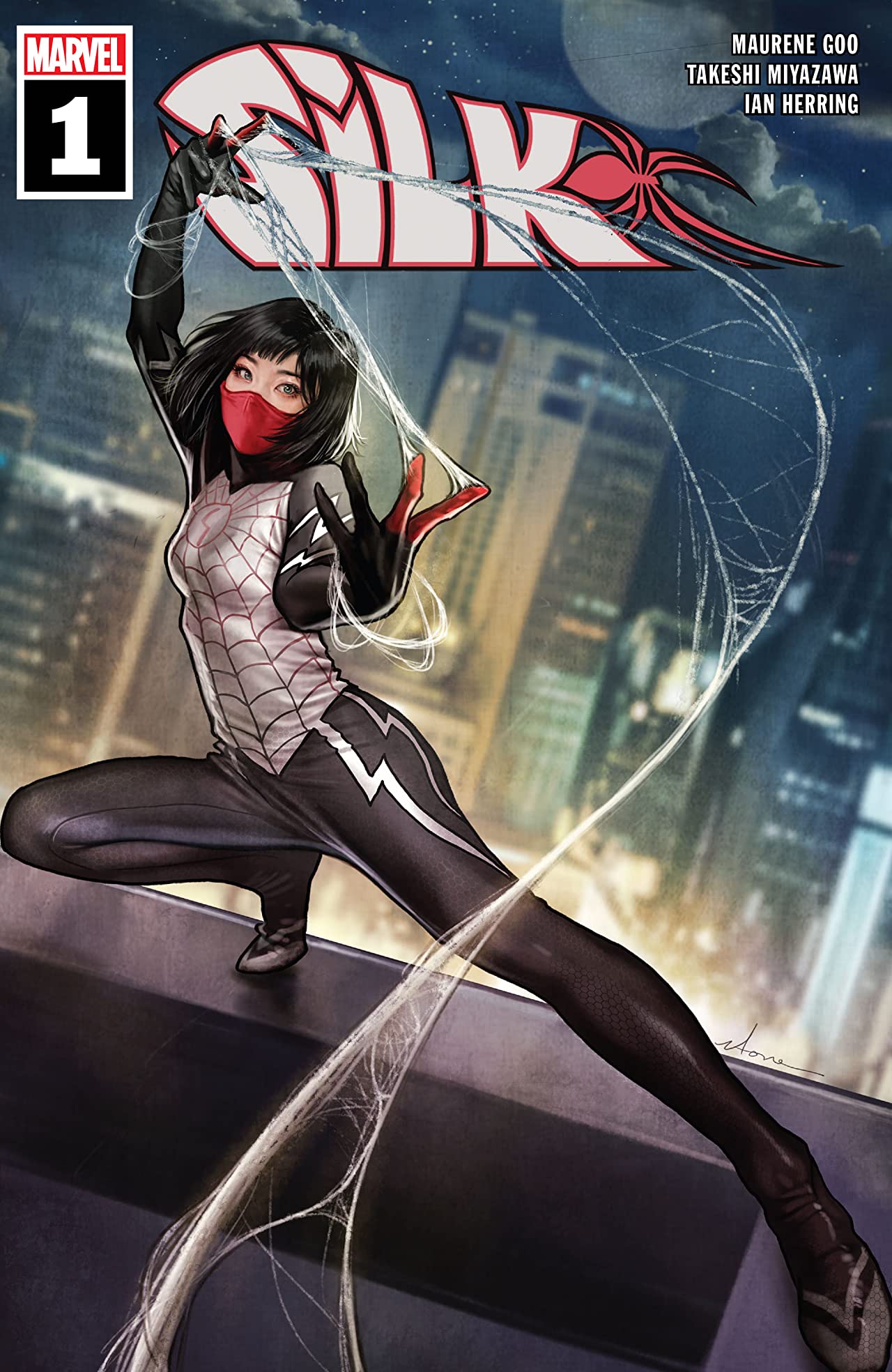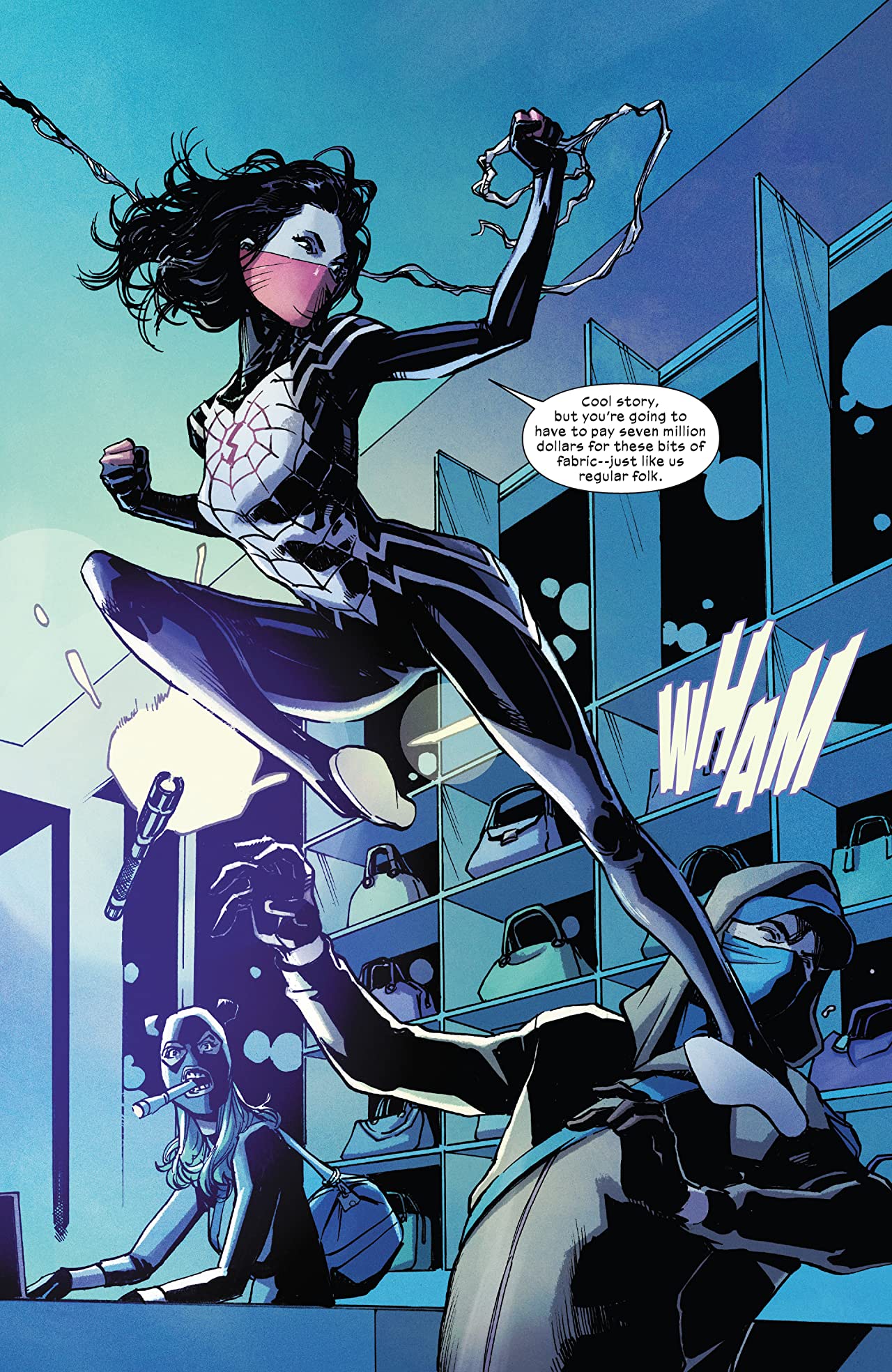Best Shots review: Silk #1 lacks a certain something to make it memorable
Maurene Goo and Takeshi Miyazawa's new Silk is missing something

When the character of Cindy Moon was first introduced as part of Dan Slott's tenure with Spider-Man, it appeared that more thought had gone into deciding how she got her powers than actually crafting her personality. Her solo series by writer Robbie Thompson, which followed soon after, thankfully got to work giving her a story of her own - one which did deal with more particulars of her backstory, but also worked to show her becoming acclimatized to living out in the world after years of being trapped in the bunker.
Written by Maureen Goo
Art by Takeshi Miyazawa and Ian Herring
Lettered by Ariana Maher
Published by Marvel Comics
'Rama Rating: 5 out of 10
Since then, Cindy has been a part of the Agents of Atlas, but Silk #1 is the beginning of her first solo series in quite some time (especially considering the delays brought about by the pandemic). It marks Maureen Goo's first swing at writing comics – having come to the Marvel Universe from the world of young adult fiction. Her panel-to-panel pacing works when it comes to giving Takeshi Miyazawa and Ian Herring the appropriate amount of action to fit in each image. The first page establishes two crooks who have broken into a clothing store, with its third and final panel depicting a web attaching to a ceiling fixing in order to let Silk swing in after the page turn.

Said splash page is a big image that works as an introduction for those who haven't read anything with the character yet. The art team utilizes one of the thieves' flashlights like a spotlight in order to highlight the stand-out design of the costume. Now on the scene, Silk handles them with ease, no doubt because Miyazawa and Herring make it look easy themselves. Their animated style fits with not just Silk's rapid movement, but also how the costume doesn't cover her eyes. Leaving those out in the open ensures that even during action, they still have a way to render her expression fully.
What should be a simple tone-setting scene however is hampered by Goo's script straining to set-up banter and quips, a noticeable factor from how joke-filled this opening sequence gets as Silk and the would-be thieves trade blows and barbs. She might not be the most confident character, but there's a difference between being overly talkative and being belabored. A Mad Men joke later on also reads as a more general pop-culture reference rather than one which is character-specific. In fact, the opener's biggest problem is that it lacks a real insight, a solid angle to this limited series that makes it stand out.
Which is primarily a result of how similar the tone and setting struck up is to that of the Thompson-penned series. Cindy's living with her brother Albert and splitting her time between fighting crime as her costumed persona and working for J Jonah Jameson; this time at the tabloid news site Threats and Menace of the Nick Spencer Spider-Man era. JJJ still calls her Analog as a nickname of endearment. The setting might be different in theory to when they were both at Fact Channel in the Slott era, but the status quo is ultimately the same.

Silk #1 preview


This issue could have been released the month after the previous Silk creative team finished their run and read like a new team coming aboard for a spell. But with it having been a few years, that illusion of change stands out. For a character that has fans but isn't a mainstay like Spider-Man is, it's worrying that the character runs the risk of becoming trapped by their early status quo. Even Cindy's internal narration, used by Goo in order to establish backstory, is functionally similar to that which opened the previous volume.
This wouldn't matter as much if the book had a stronger hook. This first issue establishes a gang-related case that allows its lead avenues for investigation as a reporter and as Silk, but it lacks a standout clue or suspect which really grabs hold of the reader. With how Goo is used to writing full narrative installments rather than monthly chunks, and how Miyazawa and Herring's artistic energy has previously been utilized for younger heroes like Ms. Marvel and Spider-Gwen, the investigatory nature of the series appears to be one that could have been better served if Marvel were trying to make bigger plays into the original graphic novel market.
Get the best comic news, insights, opinions, analysis and more!
As a single issue, however, it has the broad beats and structure without a distinctive personality of its own. As nice as it is to have Silk back, and as much as the Thompson-written run was an enjoyable one, it would have been even nicer to get a book that wasn't just trying to recapture the essence of that and instead tried to discover what other style and form suited the character.
A live-action Silk TV show was recently reported to be in development.
Matt Sibley is a comics critic with Best Shots at Newsarama, who has contributed to the site for many years. Since 2016 in fact.


